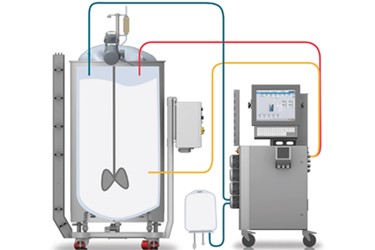Checking Out Cutting-Edge Foam Control Technologies for Lasting Practices
Checking Out Cutting-Edge Foam Control Technologies for Lasting Practices
Blog Article
A Comprehensive Guide to Implementing Foam Control Solutions in Your Procedures
Reliable foam control is an important facet of functional efficiency that frequently goes neglected. Comprehending the details of foam generation can significantly influence both productivity and item top quality. By analyzing vital elements such as application compatibility and employees training, organizations can optimize their foam administration initiatives.
Recognizing Foam Challenges
Foam difficulties are a substantial issue throughout numerous markets, affecting functional performance and product top quality. The formation of too much foam can hinder processes such as blending, transport, and storage, causing increased downtime and waste. In industries like food and beverage, pharmaceuticals, and petrochemicals, foam can disrupt production lines, triggering product incongruities and contamination dangers.
In addition, foam can block equipment functionality, leading to costly fixings and upkeep. In wastewater therapy, foam can disrupt clarifier operations, resulting in reduced therapy effectiveness and regulatory conformity concerns.
Understanding the underlying sources of foam generation is important for reliable administration. Factors such as surfactants, temperature fluctuations, and frustration degrees can all add to foam manufacturing. Identifying these elements allows industries to implement targeted methods that minimize foam formation while preserving item honesty.
Types of Foam Control Solutions

Mechanical options entail the usage of tools such as foam skimmers or defoamers. Chemical solutions, on the other hand, include the application of defoaming agents-- materials that disrupt the foam structure, leading to its collapse. Foam Control.
Lastly, operational methods concentrate on process modifications. This might include customizing equipment parameters, such as temperature and pressure, or altering the circulation prices of fluids to minimize foam generation. Carrying out good housekeeping practices can additionally alleviate foam development by decreasing impurities that add to foam security.
Selecting the appropriate foam control service involves assessing the certain demands of the procedure, consisting of the sort of procedure, the features of the materials entailed, and safety considerations.
Selecting the Right Products
Choosing the best foam control products needs an extensive understanding of the certain application and its special difficulties. Factors such as the kind of foam, the setting in which it happens, and the desired result all play critical duties in product option. Foam Control. In markets such as food handling, it is imperative to pick food-grade defoamers that conform with safety and security laws while effectively managing foam.
Furthermore, think about the viscosity of the fluid where the foam issue exists. Some products are formulated for low-viscosity applications, while others are tailored for thicker liquids. Compatibility with existing processes is an additional crucial facet; the selected foam control representatives need to incorporate effortlessly without interrupting total procedures.
An additional vital variable is the approach of application. Some items might need dilution, while others can be applied straight. Analyzing the ease of usage and the needed dose can offer insights right into the product's performance and cost-effectiveness.
Execution Methods
Effective execution approaches for foam control services need a methodical method that lines up item selection with operational demands. The very first step entails an extensive analysis of the processes where foam happens, identifying particular areas that demand treatment. By involving cross-functional groups, including production, quality, and engineering assurance, organizations can gather insights that notify the choice of the most reliable foam control products.
Next, it is important to reference establish clear purposes for foam reduction, making sure that these goals are attainable and quantifiable. This may involve specifying acceptable foam levels and the timelines for execution. Training personnel on the buildings and application techniques of selected foam control agents is similarly crucial, as correct use is essential for optimum outcomes.
Additionally, incorporating foam control remedies into existing operations requires mindful preparation. Ultimately, a well-structured technique will certainly enhance functional effectiveness while efficiently taking care of foam-related obstacles.
Monitoring and Assessing Efficiency
Tracking and evaluating the effectiveness of foam control services is essential for ensuring that carried out techniques produce the wanted outcomes. This process includes systematic data collection and evaluation to analyze the performance of foam control agents and strategies. Trick efficiency indicators (KPIs) should be developed prior to implementation, enabling a clear baseline versus which to measure progression.

Assessing performance also calls for periodic evaluations of foam control treatments and agent efficiency. This can be completed with sampling and screening, allowing operators to establish if existing options are satisfying operational requirements. It is important navigate to this site to get responses from group participants that interact with these systems daily, as their understandings can expose functional nuances that quantitative data may forget.

Eventually, an organized monitoring and assessment structure assists identify necessary adjustments, making sure that foam control solutions remain efficient, affordable, and lined up with organizational objectives.
Final Thought
Finally, effective foam control services are crucial for optimizing operational performance and keeping product top quality. A detailed understanding of foam obstacles, incorporated with the selection of ideal items and execution methods, facilitates the successful management of foam generation. Developing measurable KPIs and spending in workers educating even more enhance the performance of foam control procedures. Routine surveillance and assessment ensure constant renovation, ultimately resulting in look at this web-site a much more streamlined and productive functional setting.
Implementing great housekeeping methods can likewise alleviate foam development by minimizing pollutants that add to foam stability.
Selecting the appropriate foam control products needs a comprehensive understanding of the details application and its one-of-a-kind difficulties (Foam Control).Successful execution approaches for foam control options require an organized technique that aligns item selection with functional demands.In verdict, effective foam control remedies are important for enhancing functional performance and keeping item top quality. A complete understanding of foam challenges, integrated with the choice of suitable items and execution approaches, helps with the effective administration of foam generation
Report this page